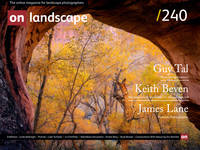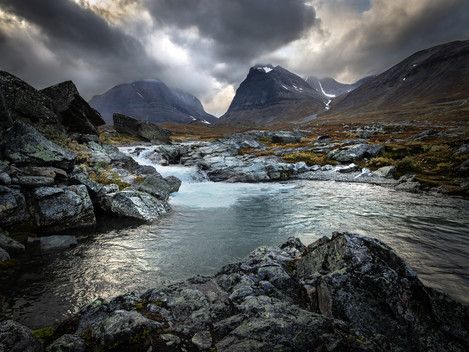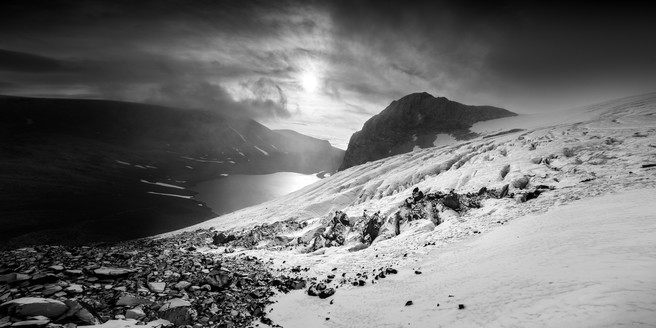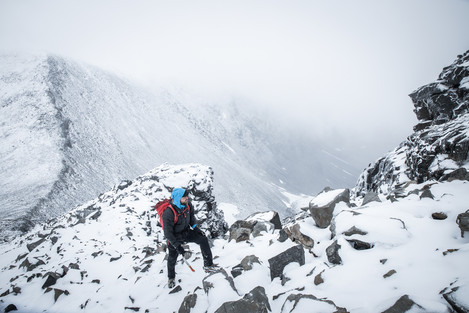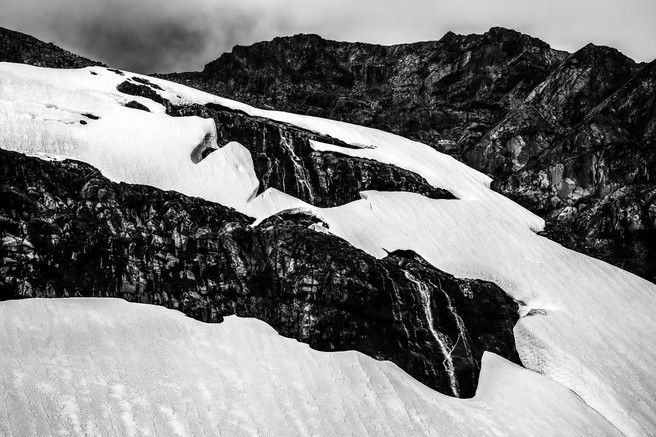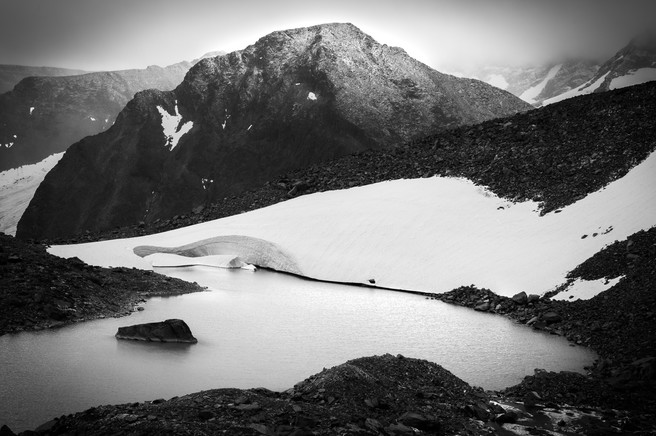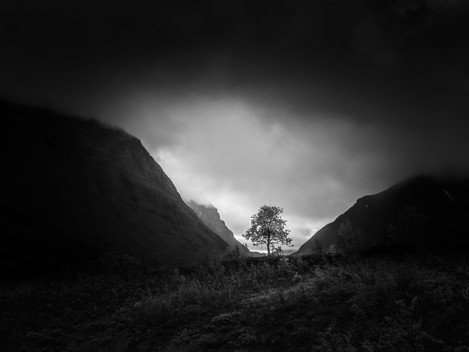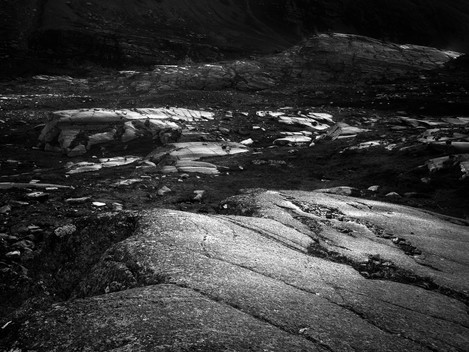Hiking the Arctic Alps in Winter

Krister Berg
Krister Berg is currently an amateur photographer and meditation instructor. He is qualified in religious studies and works in Church of Sweden in one of the suburbs of Stockholm. His first steps as a photographer were in the dark room at school in the 80s. He worked in 90s as a professional photographer specialising in landscape, nature and commercial assignments. He has often featured in Swedish photo and outdoor magazines. He is also a member of the Swedish nature photographers association.
One early September morning I open the tent and look out, finding myself surrounded by high mountains in the clear dawn light. Nothing can make me go back to my sleeping bag. Time to go to work! I get dressed and head for the bottom of the valley and its strong red, yellow and orange autumn colours. My grown-up son, who doesn’t see the point of early morning photography, is still sleeping in the tent. I should have gotten up earlier! I walk towards the little river at the bottom of the valley and manage to find some classic compositions framed by burning colours and water in the foreground and high mountains in the background. Quite all right to me! But it isn't exactly what I am looking for, so I set off further into the valley. And here I find my motif: forms shaped by the glacier thousands of years ago. In the rainy, black and polished flat rocks the sun sparkles against the light. Perfect for black and white pictures. Sometime later I am back at our tent, finding that my son has left for the mountain lodge. Time for breakfast!
We spent a week in the Kebnekaise mountains. Here you'll find Sweden's highest and most well-known peak, Giebmegáisi. When people in the early twentieth century realised that this was the highest mountain in the country, tourists started finding their way to the area. An alpine style hut was built, making it a centre for Swedish mountaineers and hikers.
The aim of many Giebmegáisi visitors is to climb the highest peak, the South Summit, today 2097 m above sea level. Being a glacier it varies in height and as a result of global warming it has shrunk so much that it might soon be replaced by the North Summit as number one in height. There are several suitable routes up to the South Summit but the Western route is the most common. It is a long and physically demanding route passing rocky, variable and steep terrain, offering an ascent of up to about 1 800 m, but without technical sections. There are also guided tours along the Eastern route, which is shorter but much steeper, crossing the Björling Glacier with a Via Ferrata climb to the summit.
My son and I have been to the area many times before and climbing the summit is not our main goal this time. But a windless bluebird morning makes us change our plans and after a long breakfast, we start hiking along the Eastern route. We didn’t bring our harnesses but having climbed the route several times before we feel comfortable without them. Not to recommend for anyone without alpine skills! A thin layer of verglas ice makes our top out more thrilling than necessary and we decide then and there not to take the same route down.
After the climbing, we hike a few hundred meters over scree before the snow clad summit appears. We put on our crampons to climb the glacier and are greeted by sunshine and a fantastic view. Finding yourself at such an altitude is always a nice feeling on a clear and still day, but, alas, the number of remarkable pictures is small.
In the area, there are several other mountains more than 2 000 m high, and one of them, Gaskkasčohkka, has been on our mind for a long time. To get there, we hike out to Tarfala, a narrow mountain valley overlooking four 2 000 m peaks embedded in Sweden’s largest glaciers. A truly wild and spectacular place. At the very bottom of the valley, there is a simple mountain refuge where we spend the night.
We wake up early the next morning and prepare for a long day. The weather is not good, but we have plenty of time and the route is not difficult. After a short hike, we put on our crampons and follow the edge of the South Gaskkasčohkka Glacier up towards a narrow ridge where we are met by a stunning view over the North Gaskkasčohkka Glacier covered with a thick layer of fresh snow.
The weather gets worse and worse but the route towards the summit is easy to find as it follows the ridge. A short passage of scrambling over rocks with a thin layer of snow and verglas is the last obstacle before reaching the large top plateau. Total whiteout! We turn around and see nothing but our own footprints in the newly-fallen snow. The altimeter indicates an altitude of 2 006 m, but the pressure changes during the night make the margin of error too big for us to estimate the correct position using the contour map. We decide that we got close enough to the summit and head back down. A few hours later, as we reach the refuge we look up and see the skies clearing. If we had only started a couple of hours later we would have had amazing views from the summit!
The day after we try to reach a mountain ridge with a name that fires our imagination – the Dragon's Ridge. The route to the ridge follows a steep snowfield on the edge of the crevasse filled Kebnepakte Glacier. To an outsider, this is a dangerous place. We carefully kick steps in the soft snow, trying not to look down at the deep crevasses below us. Once up in the pass we are in a different world. A thin layer of ice and snow covers the scree and on our right hand side, the high walls of Gaskkasbákti looms over us like a terrible black fortress. We slowly continue in the difficult terrain towards the ridge, but as we reach the glacier leading up to it we decide to bail. The weather is poor, and fresh snow covers the glacier, making a crossing without a rope too dangerous. But it is beautiful and I rejoice. I have taken exactly the kind of pictures I had hoped for – pictures that capture the mystery and beauty of Giebmigaisi.
My photography on the trip
Some of these images from Kebnekaise have been done quickly during hiking, others are created during a longer process. It all depends on what there was time for. When hiking with a buddy you can’t really do as you like. But by nature, I am very mobile and rather look for the motives than wait for them. I also take a lot of pictures when I'm out. The camera is my sketchbook and I constantly try to find something I am happy with. When I do, I often go further and further into the composition. I watch, simplify, and evaluate. From a day trip, I am usually happy with 4-5 pictures. I use the LCD screen almost exclusively when shooting. It is set to black and white, and it is almost a necessity for me today. Mostly because it’s easier when it’s dark.
Photographically, I am interested in telling something about life. I used to be a commercial landscape photographer that had to take photos that I could sell. But as an amateur, I can do what I want. Without chasing ‘likes’ on social media or income. So that is why nowadays I try to say something about the darkness and the light in my life. About longing and sorrow. About mystery and the spiritual side of mankind.
Therefore, I have chosen to work mostly in monochrome because I think it gives the viewer a greater opportunity for interpretation. Monochrome images are in a way not completely finished. You can see your own colours and the photos are recreated in the viewer's mind. That's why it does not matter so much to me today where I photograph. It is possible to create pictures behind my house if I would like to but going away to interesting places gives an extra dimension.
Technically I prefer to work with wide angles, it gives a stronger sense of presence in the images, unlike telephoto lenses that can be flat. For me, the composition is important. Each image must have its own supporting idea. Preferably with a simplified expression of balancing lines and surfaces. In a mountain environment, great demands are placed on the photographer. The distances are great, and it is often difficult to move around as you like in the landscape. The weather can ruin everything, and the equipment takes a beating. It is also problematic to do solo trips in a roadless country. In the Swedish mountains, there is no coverage for telephones and there is a long way between trails and cottages. Despite that, there is probably no better experience than to be able to hike freely over the mountains without any particular goal other than photographing.

